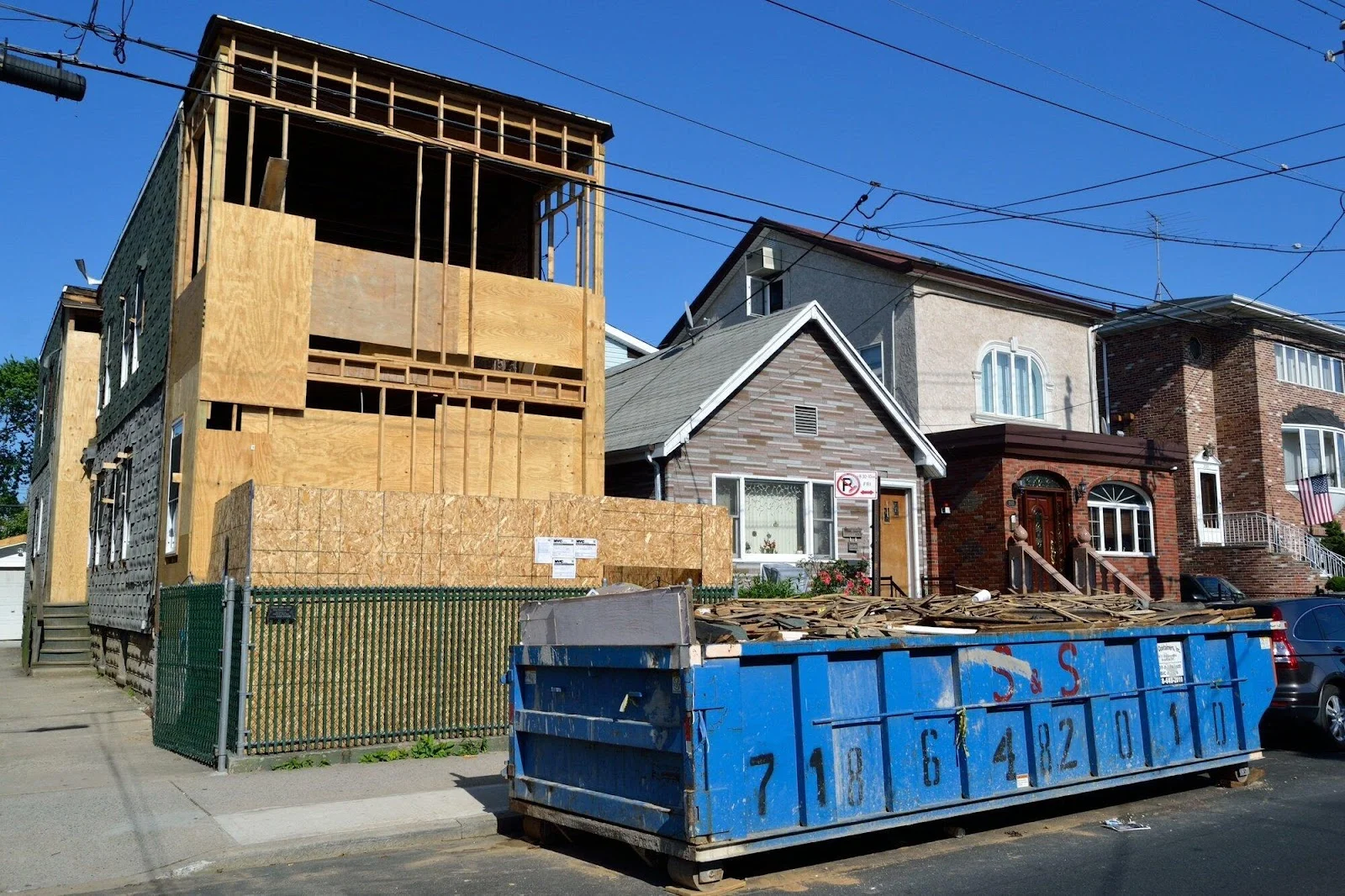REAL ESTATE
Building Compliance: Navigating SWPPP in Construction and Industrial Sectors

Why is it critical for construction and industrial professionals to adhere to SWPPP regulations? In the fast-evolving landscape of construction and industry, managing environmental effects is not just a regulatory requirement—it’s a pivotal aspect of sustainable development. The Stormwater Pollution Prevention Plan plays a fundamental role in these sectors. It guides operations to prevent detrimental effects on water quality.
This article explores how businesses can navigate SWPPP requirements to ensure compliance and environmental stewardship. Understanding and implementing swppp inspections are essential for maintaining these standards. These inspections help find potential issues before they adversely affect the environment. Ensuring adherence to SWPPP also supports sustainable practices within the industry.
Understanding SWPPP Requirements
Stormwater Pollution Prevention Plan is a regulatory framework designed to prevent stormwater pollution from construction and industrial activities. Dictated by the Environmental Protection Agency under the National Pollutant Discharge Elimination System (NPDES), operators must implement site-specific plans detailing how they will minimize sediment and pollutant runoff. These plans are essential in protecting water bodies from contaminants that can be disrupted during extensive construction projects or industrial operations.
Key Elements of a Successful SWPPP
Implementing an effective SWPPP involves several strategic components:
- Erosion and Sediment Controls: Techniques such as silt fences, sediment basins, and storm drain inlet protection are used to control sediment and erosion on site.
- Site Stabilization Practices: Stabilization methods, including temporary seeding, mulching, and other soil stabilization measures, are deployed to prevent erosion during and after construction activities.
- Pollution Prevention Measures: Proper waste management, spill prevention and response, and concrete washout areas help minimize the risk of chemical pollutants entering stormwater systems.
- Training and Education: Regular training for all construction activity personnel ensures they know compliance strategies and techniques for minimizing stormwater pollution.
Compliance Challenges and Strategies
Navigating its compliance can be challenging due to the complexity of regulations and the specific nature of different projects. Here are some strategies to overcome these challenges:
- Customized SWPPP Documentation: Each project should have a tailored SWPPP that addresses its unique environmental risks and compliance requirements. This document should be dynamic and updated regularly as site conditions and regulations change.
- Regular Inspections and Monitoring: Conducting regular site inspections and monitoring helps identify potential compliance issues early, allowing for timely corrections. This also includes maintaining proper documentation of all inspections and corrective actions taken.
- Leveraging Technology: Advanced technologies, such as drone surveillance and GIS mapping, can enhance the accuracy of site inspections and monitoring, providing comprehensive overviews of the site conditions and compliance efforts.
The Benefits of Robust SWPPP Compliance
Beyond meeting legal requirements, robust compliance with its regulations offers substantial benefits for the construction and industrial sectors:
- Enhanced Reputation: Companies that consistently meet compliance standards can enhance their market reputation, becoming preferred partners in the industry due to their commitment to environmental protection.
- Cost Savings: Effective stormwater management can reduce potential fines from non-compliance and mitigate environmental damage that could lead to expensive remediation efforts.
- Environmental Conservation: Proper implementation helps protect local ecosystems and water resources, contributing to biodiversity preservation and environmental sustainability.
For construction and industrial sectors, effectively navigating the regulations is not just about compliance—it’s about integrating sustainable practices into core operational strategies. As environmental standards evolve, adapting to and exceeding its requirements supports regulatory compliance and aligns with broader corporate social responsibility goals. Conducting regular SWPPP inspections helps ensure that businesses are proactively managing stormwater pollution. By adhering to these practices, companies safeguard the environment and secure their place as leaders in sustainable industry practices.
BUSINESS
Tips for Choosing the Right Yard Waste Dumpster Rental

When it comes to managing yard waste, having the right dumpster rental can make a world of difference. Whether you’re tackling a landscaping project or simply cleaning up your outdoor space, having a convenient and efficient way to dispose of yard waste is essential.
With numerous options available, it’s important to know what to look for when choosing a yard waste dumpster rental.
Here are some valuable tips to help you make the right decision.
Assess Your Needs
Before you dive into searching for a yard waste dumpster rental, pause for a second to think about what you need. Think about how much yard waste you think you’ll end up with and the size of the stuff you’re tossing out. This will give you a good idea of what size dumpster you should go for. Rental services usually have different sizes to choose from, so knowing your needs will make picking one a breeze.
Research Local Providers
Before selecting a yard waste dumpster rental, it’s crucial to research local providers thoroughly. Explore this dumpster rental service in Delaware for insights on what to consider when choosing a rental company near you. Delve into reviews, compare pricing, and evaluate services provided. Ensuring you secure the most advantageous deal available while upholding quality is paramount.
Consider Sustainability
Going green is not only good for the environment, but it can also save you money on your rental. When searching for a yard waste dumpster rental, consider asking if they have environmental considerations in their waste management process or if they recycle the waste they collect. This will not only reduce your carbon footprint but may also result in lower fees.
Consider Pricing and Terms
When you’re checking out various yard waste dumpster rental choices, make sure to think about the pricing and terms. Look for clear pricing options with no sneaky fees, and ask about any extra charges for delivery, pickup, or going over weight limits.
Also, keep an eye on how long you can rent it and any rules about what kind of yard waste you can toss in. Knowing the ins and outs of the rental deal will help you dodge surprises and make sure your rental goes without a hitch.
Choose the Right Size
Choosing the perfect dumpster size is key for handling yard waste like a pro. If it’s too small, you’ll end up with overflow and extra charges; too big, you’re overspending. Think about how much waste you’ll have and pick a dumpster size that’s just right. Rental services usually have various options, so you can find the one that suits your needs best.
Prioritize Sustainability
When you’re renting a yard waste dumpster, think about going green. Check out dumpster rental services that give eco-friendly disposal choices like composting or recycling yard waste whenever they can. By picking a provider that cares about sustainability, you’re not just getting rid of waste, you’re helping out the planet too.
Making the Right Yard Waste Dumpster Rental Choice
Picking the perfect yard waste dumpster rental is a must for handling outdoor projects and keeping your outdoor area neat. By figuring out what you need, checking out local options, thinking about costs and terms, finding the right size, and focusing on sustainability, you can make sure renting goes smoothly.
Whether you’re sprucing up your yard or doing some landscaping, choosing the best dumpster rental service in your area will help you manage your yard waste well and in an eco-friendly way.
Share this article and other related content with your fellow readers as you continue exploring the articles on this site.
REAL ESTATE
The Cost of Inflation in Construction

Since 2022 inflation has been driving up costs for just about everything, from bread to gasoline to construction costs and manufacturing. At just about every level, cost increases from 10 to 200 percent have been realized, sometimes adding three to four layers onto the original cost from the producer before reaching the final end user or customer. Construction in particular has been significantly hammered by inflation in multiple areas, depending on so many different supplies, skills, trades and products to complete a project. That cost increase ultimately has to get passed on to the commercial or industrial customer who may not be so willing to take on such increases if they can be delayed until the market is more reasonable.
How Can it Be Fixed?
The primary tool used by the government involves reducing the amount of currency in the market, thereby driving up the value of the dollar and reducing inflation’s effect. While easy to say, the implementation aspect is hard. It means increasing the cost of borrowing, making new money more expensive to obtain. Other methods involve reducing the number of income earners generating new value as well. That in turn results in job loss. The list goes on with a singular, common feature – pain. Most solutions for inflation tend to cause more loss, which is why inflation is often feared as a double-damage effect on an economy.
What Can Construction Do as a Solution?
One method of fighting inflation in the construction industry involves finding lower-cost substitutes for supplies and services used. However, this is a bit of a limited option; going too low ends up lowering the quality of the goods or services provided. Since the construction company is ultimately liable for the quality of the entire project delivery, there is a practical floor to how low quality can go before a discounted price isn’t worth taking. After all, the old saying of, “You get what you pay for,” really does apply in construction.
A second method involves financing the inflation as a delay tactic. The thinking here is to let someone else’s money take the hit of inflation through borrowing and, when times are better and currency valuation rises, the financing can be paid off with a lower cost. It is, in essence, gambling that the future will provide a better exchange for the borrower than the cost of the borrowing today. In many cases, this kind of financing out of inflation doesn’t work, and the cost of the construction ends up being far more.
A third method involves maximizing local resources, labor and equipment. While some construction companies insist on bringing all of their resources, cost-sensitive operations focus on finding the resources locally wherever the project happens to be. Again, there is a bit of gambling here; if the resources are not available locally, the company will still have to bring them in to complete the job. At short notice, that could drive the cost higher than if the elements were retained to begin with well in advance.
The Most Sensitive Construction Areas Hit
Among the areas hardest hit, raw material suppliers and equipment fleet managers have been seeing the most noticeable ongoing expense impacts. Fuel for vehicles erodes operating budgets mercilessly. Where construction involves a lot of transport, fuel costs are going to remain a challenge.
Most construction requires raw materials for assembly and end product development. As raw materials go up, the cost of the project increases notably. Materials can reach as much as 60 percent of a construction project’s overall expense, so controlling procurement is essential to protect profit margins. Yet again, the quality issue ties the project’s hands from going too cheap on supplies.
Finally, labor will continue to be a pressure during periods where hiring is difficult. Combined with inflation, deficits in skilled labor and trades can easily drive up salary and wage costs on a project, even with outsourcing and contracting versus direct hires.
Inflation Doesn’t Last Forever, Right?
Much of the expectation in the U.S. is that the current inflation levels will be temporary. However, Japan was a good example where long-lasting economic problems hampered multiple industries for a decade or longer. There’s no rule that says inflation can only last one or two years. Instead, monetary policy tends to be the primary response that makes a difference, reducing supply of currency and increasing economic buying power.
REAL ESTATE
LessInvest.com Real Estate: Easy Steps to Property Wealth

Introduction to LessInvest.com Real Estate
Welcome to the world of real estate, where opportunities abound for those ready to build wealth and secure their financial future. At LessInvest.com, we believe real estate investing should be accessible to everyone—regardless of your financial starting point.
Whether you’re a seasoned investor or a complete beginner, our platform offers step-by-step guidance, powerful tools, and expert insights to help you navigate and succeed in the property market.
Why Real Estate Is a Powerful Investment
Real estate remains one of the most reliable, long-term wealth-building strategies. Here’s why:
- Appreciation Over Time: Unlike many other assets, property values often rise.
- Leverage Opportunities: Buy properties worth more than your initial investment using mortgages.
- Passive Income: Earn consistent cash flow through rental income.
- Portfolio Diversification: Reduce financial risk by balancing with other assets.
- Tax Benefits: Enjoy deductions on mortgage interest, depreciation, and more.
How to Choose the Right Property
Choosing the right property is the foundation of a successful investment. Consider these essential steps:
- Define Your Goals
Are you investing for monthly income, long-term growth, or both? - Location is Key
Look for areas with:- High growth potential
- Good schools and infrastructure
- Access to public transit and amenities
- Assess the Property Condition
Fixer-uppers may offer value but account for renovation costs.
Inspect thoroughly before purchase. - Understand Market Trends
Research local data on:- Sale prices
- Rental demand
- Vacancy rates
- Trust Your Instincts
If a deal feels off, it probably is.
Understanding Financing Options
Knowing how to finance your property can make or break your investment. Explore these options:
- Traditional Mortgages
Fixed or variable interest, suitable for long-term investors. - Hard Money Loans
Short-term, quick approval, but higher interest—best for flips or time-sensitive deals. - Investment Partnerships
Pool resources with others to reduce individual financial risk. - Real Estate Crowdfunding
Start small by investing in a portion of larger properties. - Government-Backed Loans
FHA and similar programs offer lower down payments and relaxed credit requirements.
Managing and Maintaining Your Investment Property
Owning a property is only half the journey—management is where wealth grows:
- Routine Inspections
Prevent small issues from turning into costly repairs. - Build a Network of Contractors
Having dependable help saves time and ensures quality. - Implement Preventive Maintenance
Schedule servicing for:- HVAC systems
- Plumbing
- Electrical work
- Maintain Strong Tenant Communication
Encourage early reporting of issues
Build trust and extend lease durations - Stay Compliant
Follow local rental regulations to avoid legal trouble and ensure tenant satisfaction.
Tips to Maximize Profits in Real Estate
Boost your returns with these practical strategies:
- Location, Location, Location
Invest in areas with high demand to ensure rental income and appreciation. - Renovate Smartly
Small updates like:- Fresh paint
- Landscaping
- Modern appliances
can lead to better returns.
- Use Property Management Software
Track:- Expenses
- Tenants
- Maintenance
- Market Effectively
Use digital platforms to reach a larger pool of tenants or buyers. - Network with Other Investors
Share ideas, collaborate, and discover new opportunities.
The Future of Real Estate Investing with LessInvest.com
The investment landscape is evolving—and LessInvest.com is leading the way:
- Tech-Powered Tools
Analyze deals and trends with AI-powered data. - User-Friendly Interface
Intuitive design ensures accessibility for all levels of investors. - Educational Resources
Grow your knowledge with guides, videos, and expert advice. - Vibrant Community
Connect with fellow investors, share experiences, and collaborate. - Adaptable Strategies
Stay ahead with insights tailored to today’s fast-moving markets.
Conclusion
Real estate is one of the most secure and rewarding paths to financial freedom—and with LessInvest.com, that journey becomes easier and more achievable. From identifying profitable properties to securing financing and maximizing returns, our platform equips you with the knowledge and tools you need.
By following expert-backed strategies and staying informed, you’ll turn property ownership into a lasting source of income and wealth. Start your journey toward financial independence with LessInvest.com Real Estate today.
ALSO READ: SSO Conroe ISD Portal: Secure Login to All Learning Tools
FAQs
What makes LessInvest.com Real Estate different from other platforms?
LessInvest.com offers beginner-friendly tools, expert insights, and a supportive investor community—ideal for both new and experienced investors.
Can I invest in real estate with a small budget?
Yes! Through options like crowdfunding and partnerships, LessInvest.com enables entry-level investors to get started with minimal capital.
Is real estate a good choice for passive income?
Absolutely. Rental properties can generate monthly income, helping to cover expenses and build wealth over time.
What support does LessInvest.com provide for new investors?
We offer educational resources, market analysis tools, and expert guidance to help you make confident investment decisions.
How do I know which property is right for me?
Use LessInvest.com’s data tools to analyze market trends, evaluate property conditions, and align choices with your investment goals.

 ENTERTAINMENT4 days ago
ENTERTAINMENT4 days agoExploring the Kristen Archives: A Treasure Trove of Erotica and More

 ENTERTAINMENT1 day ago
ENTERTAINMENT1 day agoKiss KH: The Streaming Platform Redefining Digital Engagement and Cultural Currents

 EDUCATION1 day ago
EDUCATION1 day agoLingrohub Platform: A Complete Student Access Guide

 LIFESTYLE4 months ago
LIFESTYLE4 months agoThe Disciplinary Wives Club: Spanking for Love, Not Punishment

 TECHNOLOGY24 hours ago
TECHNOLOGY24 hours agoCasibom: The Digital Alchemy Reshaping Systems, Society, and Self

 TECHNOLOGY23 hours ago
TECHNOLOGY23 hours agoSecuring Your Online Presence: The Ultimate Guide to Buying an SSL Certificate

 TECHNOLOGY4 months ago
TECHNOLOGY4 months agoBlog Arcy Art: Where Architecture Meets Art

 BUSINESS23 hours ago
BUSINESS23 hours agoDiversifying Your Portfolio: The Key to Successful Investing in Portland, Oregon











